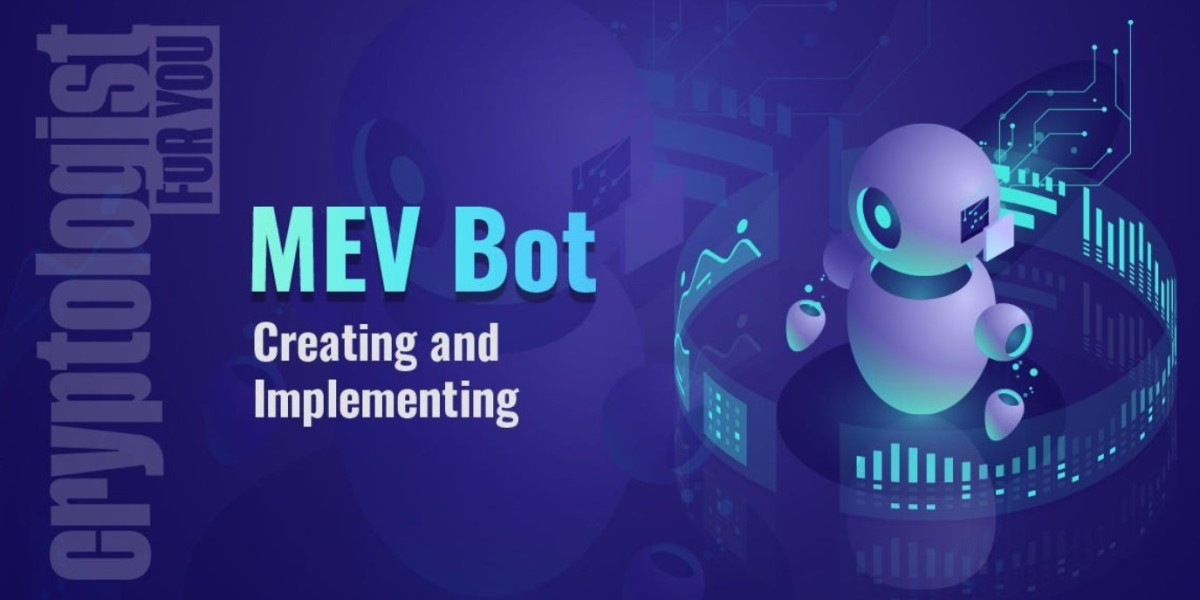In the realm of cryptocurrency trading, Miner Extractable Value (MEV) bots have become pivotal tools for traders seeking to exploit market inefficiencies. To fully appreciate their impact and potential, it is essential to understand the technology that drives these sophisticated algorithms. This article delves into the technology behind MEV bots, explaining how they work, their core components, and their interaction with blockchain networks.
What Are MEV Bots?
MEV bots are automated systems designed to exploit opportunities created by the ordering of transactions within blockchain networks. By leveraging strategies such as front-running, back-running, and sandwich attacks, these bots can extract value from market inefficiencies and transaction ordering. Understanding the technology behind MEV bot crypto involves exploring their architecture, algorithms, and integration with blockchain protocols.
Core Components of MEV Bots
Transaction Ordering Strategies
Front-Running: This strategy involves placing a trade just before a known transaction that is expected to influence the market. MEV bots use this approach to profit from price movements caused by the upcoming transaction.
Back-Running: In contrast, back-running involves placing a trade immediately after a significant transaction to capitalize on the price impact of that trade. MEV bots use this strategy to benefit from price changes following a large transaction.
Sandwich Attacks: This strategy involves placing trades on both sides of a target transaction. The bot first places a trade that pushes the price in one direction, then waits for the target transaction to occur, and finally places another trade to profit from the price movement caused by the target transaction.
Core Technologies
Blockchain Integration: MEV bots interact directly with blockchain networks, such as Ethereum, to monitor and manipulate transaction ordering. They use blockchain APIs and smart contracts to access transaction data and execute trades.
Smart Contracts: Many MEV bots leverage smart contracts to automate trading strategies and interact with decentralized exchanges (DEXs). Smart contracts enable automated execution of trades based on predefined conditions and algorithms.
High-Frequency Trading Infrastructure: MEV bots are designed to operate at high speeds, often requiring advanced infrastructure to execute trades quickly and efficiently. This includes low-latency data feeds, fast transaction processing, and high-performance computing resources.
Data Analysis and Machine Learning
Real-Time Data Feeds: MEV bots rely on real-time data feeds to monitor market conditions, transaction orders, and price movements. Access to up-to-date information is crucial for identifying and exploiting opportunities.
Algorithmic Analysis: Advanced algorithms analyze transaction data and market conditions to determine the optimal trading strategy. MEV bots use these algorithms to make data-driven decisions and execute trades effectively.
Machine Learning: Some MEV bots incorporate machine learning techniques to improve their performance over time. Machine learning models can analyze historical data and adapt strategies based on patterns and trends.
How MEV Bots Interact with Blockchain Networks
Transaction Monitoring
Node Interaction: MEV bots connect to blockchain nodes to monitor pending transactions and analyze transaction pools. This allows them to identify potential opportunities for front-running or back-running.
Transaction Pool Analysis: By analyzing the transaction pool (or mempool), MEV bots can detect large transactions, fee changes, and other indicators of potential trading opportunities.
Transaction Manipulation
Gas Price Bidding: To gain priority in transaction processing, MEV bots may bid for higher gas prices. This increases the likelihood that their transactions will be processed before others in a congested network.
Transaction Replacement: In some cases, MEV bots may replace existing transactions with their own by offering higher gas fees. This allows them to execute trades based on their strategic priorities.
Trade Execution
Automated Execution: MEV bots use automated systems to execute trades based on predefined strategies and algorithms. This ensures timely and accurate execution of trades in response to market conditions.
Interaction with Exchanges: MEV bots interact with both centralized and decentralized exchanges to execute trades. They may use exchange APIs to place orders, manage trading accounts, and monitor trading activity.
Challenges and Considerations
Network Congestion
Transaction Competition: In congested networks, MEV bots face competition from other bots and traders. High transaction volumes and fluctuating gas prices can impact the effectiveness of MEV strategies.
Latency Issues: Low latency is critical for the success of MEV bots. Network delays and processing times can affect the execution speed and accuracy of trades.
Regulatory and Ethical Concerns
Market Impact: The use of MEV bots raises questions about market fairness and the potential impact on other participants. Traders and developers must consider the broader implications of their activities on market integrity.
Regulatory Compliance: As regulations around cryptocurrency trading evolve, MEV bots must comply with legal requirements. Staying informed about regulatory changes and ensuring compliance is essential for responsible MEV bot usage.
Future Trends in MEV Bot Technology
Advanced Algorithms
Improved Strategies: Ongoing research and development will lead to more advanced algorithms and strategies for MEV bots. These advancements will enhance their ability to exploit market inefficiencies and adapt to changing conditions.
Integration with Emerging Technologies: MEV bots will increasingly integrate with emerging technologies, such as Layer 2 scaling solutions and new blockchain protocols. This integration will expand their capabilities and effectiveness.
Increased Collaboration
Collaborative Development: The development of MEV bots may involve greater collaboration between traders, developers, and platforms. Collaborative efforts can lead to more innovative and effective MEV strategies.
Community Engagement: Engaging with the broader crypto community will help address ethical and regulatory concerns, fostering a more transparent and equitable trading environment.
Conclusion
Understanding the technology behind MEV bots provides valuable insights into their capabilities and impact on cryptocurrency trading. By exploring their core components, interaction with blockchain networks, and associated challenges, traders and developers can better appreciate the role of MEV bots in the evolving crypto landscape. As technology continues to advance, MEV bots will play a critical role in shaping the future of cryptocurrency trading, offering both opportunities and challenges for market participants.



